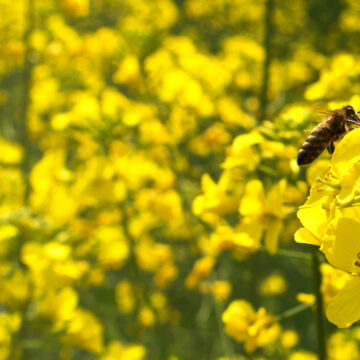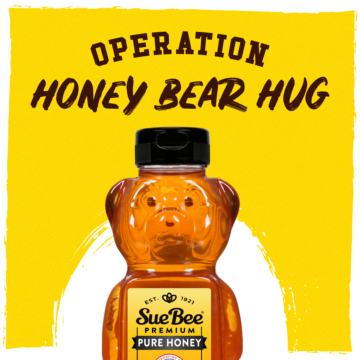Mayor of the Bees
From city hall to California and North Dakota beeyards – this beekeeper has experienced it all
He double-majored in political science and economics at the University of California, Berkeley. After graduation, he took a job in San Francisco in international trade.
But the family business – and public service – was calling him back to his hometown of Hughson, California. And when that family business is beekeeping, and your last name is “Beekman,” fate tends to play a significant role.
Besides, as any “beek” (bee geek) will tell you, once honey is in your blood, you’re a beekeeper for life. That’s certainly been the case for Matt Beekman, a third-generation beekeeper and proud member of the Sioux Honey Association Co-op.
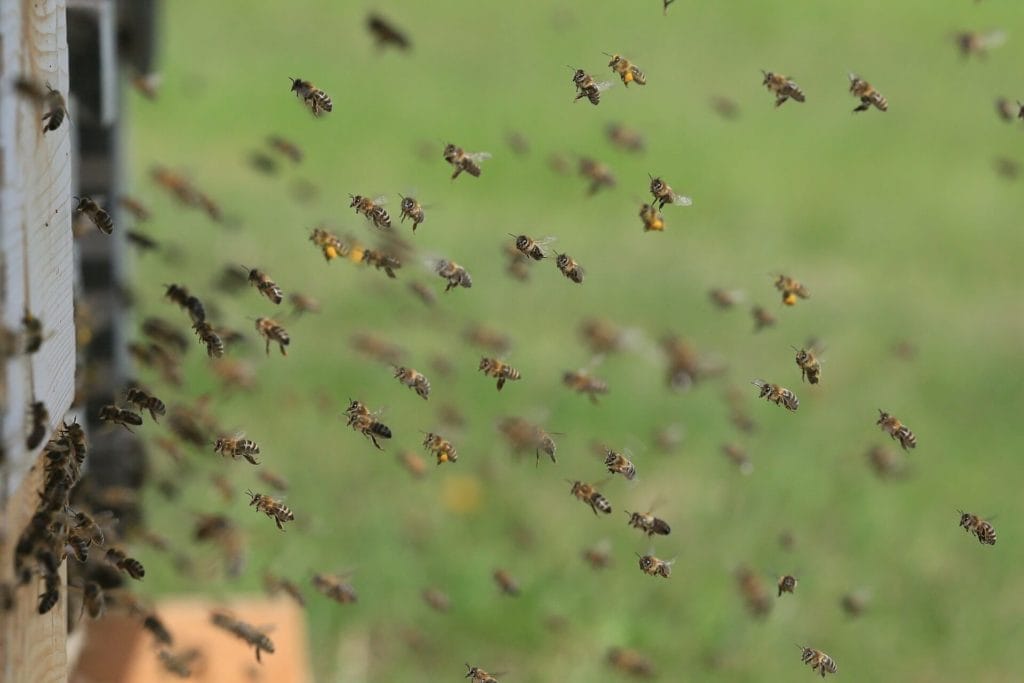
That first taste of sweet honey
Matt’s grandfather began keeping bees in the early 1930s. Like many beekeepers, it all began with finding a swarm. From there, Grandpa Beekman and his brother ran bees all over central California – from the valley to the coast.
“Honey prices were pretty good,” says Matt. “We were coming off of the Depression, so the economic opportunities weren’t that great. My grandfather saw a window and he went for it.
“When I was young, I helped my dad and grandfather. I grew up on it,” Matt says. “I was like a lot of beekeepers – and like my grandfather – who had this inherent curiosity. ‘What makes these things work?’ ‘How do these bees do what they do?’ And what’s crazy about beekeeping is I’m a third generation and they still haven’t figured it out. It’s an endless question.”
An alternate path to the beeyard
While Matt’s father continued the family bee business back in the Hughson area, Matt headed off to college to study economics and political science.
“International trade, shipping – that interested me. So I took a job in San Francisco after graduation,” says Matt. “But even when I was working in San Francisco, I would still come home a lot on weekends. I always liked it, and when it came time to start having a family and thinking long-term, I started giving serious consideration to getting back into the business.”
Matt eventually moved back to Hughson where he was soon appointed to the City of Hughson Planning Commission. After five years on the planning commission, he was elected to the city council, then mayor – all while running a beekeeping business.
“I didn’t want to be a professional politician; I was never interested in that,” he says. “But I just wanted to get involved because the town needed help with its long-term development plans and financial organization. I helped weed out some of the corruption and helped get the city back to where it was very successful.
“We had the lowest crime rate, the highest level of financial reserves, and our roads were in the best shape of any city in our county. Hughson is a model city now. People really look to us. You know, it’s a small city, but it’s governed and run very effectively.”
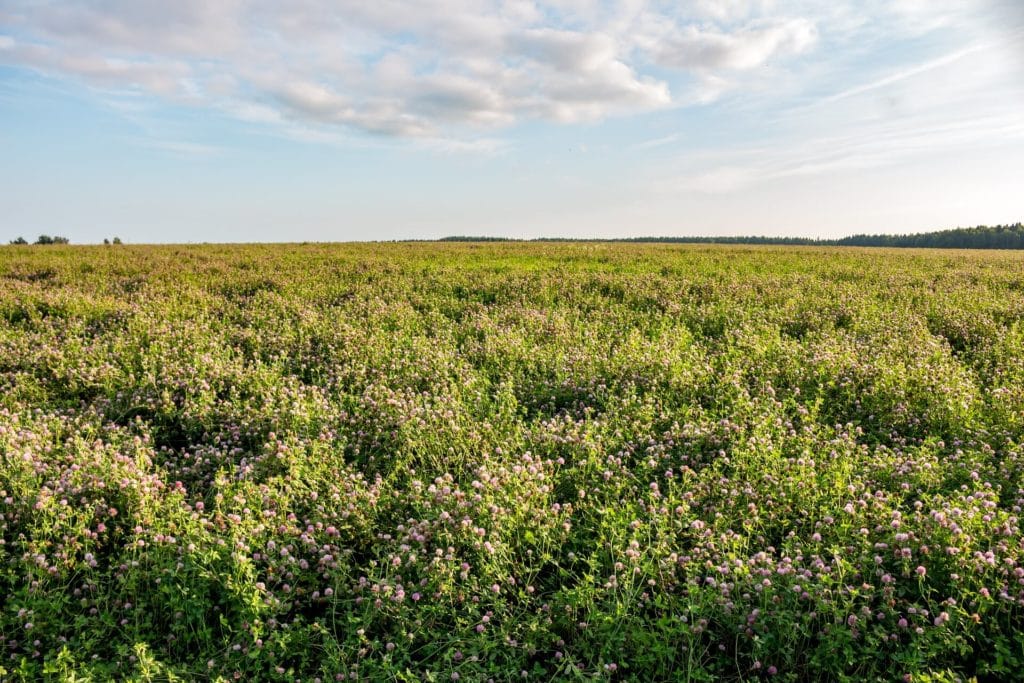
No desks, please
As rewarding as his public service life was, Matt nevertheless gravitated more and more back to beekeeping and the freedom it brings.
“When I was in San Francisco, I had an epiphany of sorts. One day I was like, ‘If everything goes just right, I could be here for another four years, staring at the same window.’ It was kind of a scary thought for me,” Matt recalls.
“Beekeeping, you’re out and about all the time. That part I really like. It’s a very dynamic job. Things are always changing. We’re moving bees to different areas all year. And we’re doing different functions – sometimes we’re doing pollination, sometimes we’re doing honey production. Raising queens – it’s always evolving.”
In the summer months, Matt takes his 4,000 hives (that’s about 180 million bees) to north-central North Dakota where they forage on the region’s abundant wild clover, canola and sunflowers.
In the fall, Matt brings his bees back to California to prepare for spring when he rents out his bees to help pollinate the state’s annual almond crop, which produces about $11 billion in almonds each year.
One almond farmer that Matt partners with on pollination is his father, Bruce, who has continued to farm almonds after selling the family’s honey business to Matt a number of years ago.
“Beekeepers never retire. They have to do something,” Matt says with a smile.
After the almond pollination in January and February, Matt takes his bees to California’s Central Coast and the foothills. Much of the honey the bees make at this point is for the bees to eat, so they can build up strength in preparation for the heavy summer honey production in North Dakota.
Matt also harvests some of the honey that his bees make in California, which offers a wide variety of floral sources. From oranges and black button sage to avocados and manzanitas in the Sierra Nevada, there are plenty of forage sources for honeybees in California.
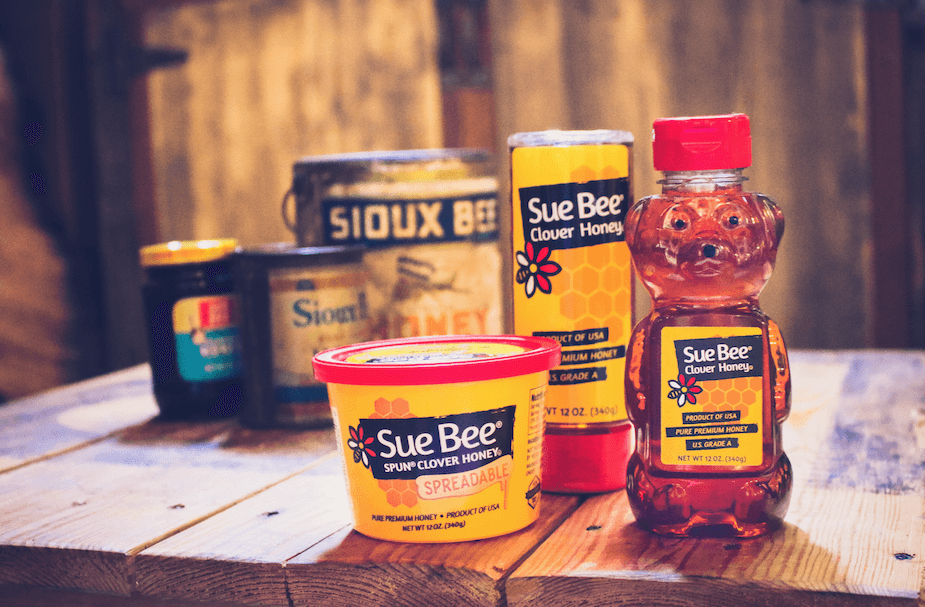
A trustworthy co-op with a rich history
Matt is the first member of his immediate family to join the Sioux Honey Association Co-op. His cousin, Bryan Beekman, has been a member of the nearly 100-year-old co-op since 2003.
“Reputation was a big reason I joined Sioux Honey,” Matt says. “It’s been almost a hundred years since they formed the co-op, and that consistency is something I was looking for.”
Selling your honey on the open market can be a crapshoot. And once the honey leaves a beekeeper, there’s no telling where it goes or what happens to it when it’s sold on the open market.
With Sioux Honey, Matt said he knows it’s U.S. Grade A, pure honey. After working in international commerce, identifying his honey as a product of the U.S.A. is a big deal for him.
“My cousin Bryan is also a member, so I talked to him about it, too,” Matt says. “I’ve been able to produce a product and been able to ship it in a relatively short time after it’s made, and we have a consistent revenue stream. Just from a planning perspective, it’s a big advantage – a big reason why we joined Sioux Honey.”
Matt’s been learning as much as he can about Sioux Honey, and he looks forward to taking on more responsibilities within the co-op.
“Definitely, as time goes on, I’d like to play a larger role and offer some input and things like that. Being a beekeeper, to me, I honestly think that honey is probably one of the most magical agricultural commodities that you can find. If you just look at all the aspects of food – texture, aromatic, sweet – honey really possesses a lot of these things. And for us, as a co-op, to be able to get this product to the consumer is an awesome opportunity.
“Every beekeeper who drains his or her holding tank and then barrels it, smells it and tastes it knows what it can be. That’s what we get to the consumer.”

The amazing qualities of honey
Adding honey to his coffee is Matt’s favorite way to enjoy nature’s sweetener. He also is an avid cook. When he’s in the kitchen, he always has a bottle of honey nearby. But honey is much more than a natural sweetener for coffee and an important ingredient in baking. Honey is magical in so many different ways, Matt says.
“If you really look at honey from a global perspective, a lot of areas in the world look to honey as a medicine,” he says. “They look to a beehive as a medicine chest. I spent a summer in Russia when I was in college and the host I was staying with was having a little bit of a lung infection and her doctor prescribed her propolis. That was the prescription, and she would consume small amounts of propolis.”
(Propolis, or bee glue, is a mixture that honeybees make by mixing their saliva and beeswax with botanical sources they collect from tree buds and sap flow. It’s used as a sealant for small spaces in a hive – as opposed to beeswax, which is used for larger spaces, like capping honey cells.)
“We’re still learning. You look at bees in general – the only limitation is our imagination. It’s really up us to keep learning and to be diligent in our care of the bees.”

